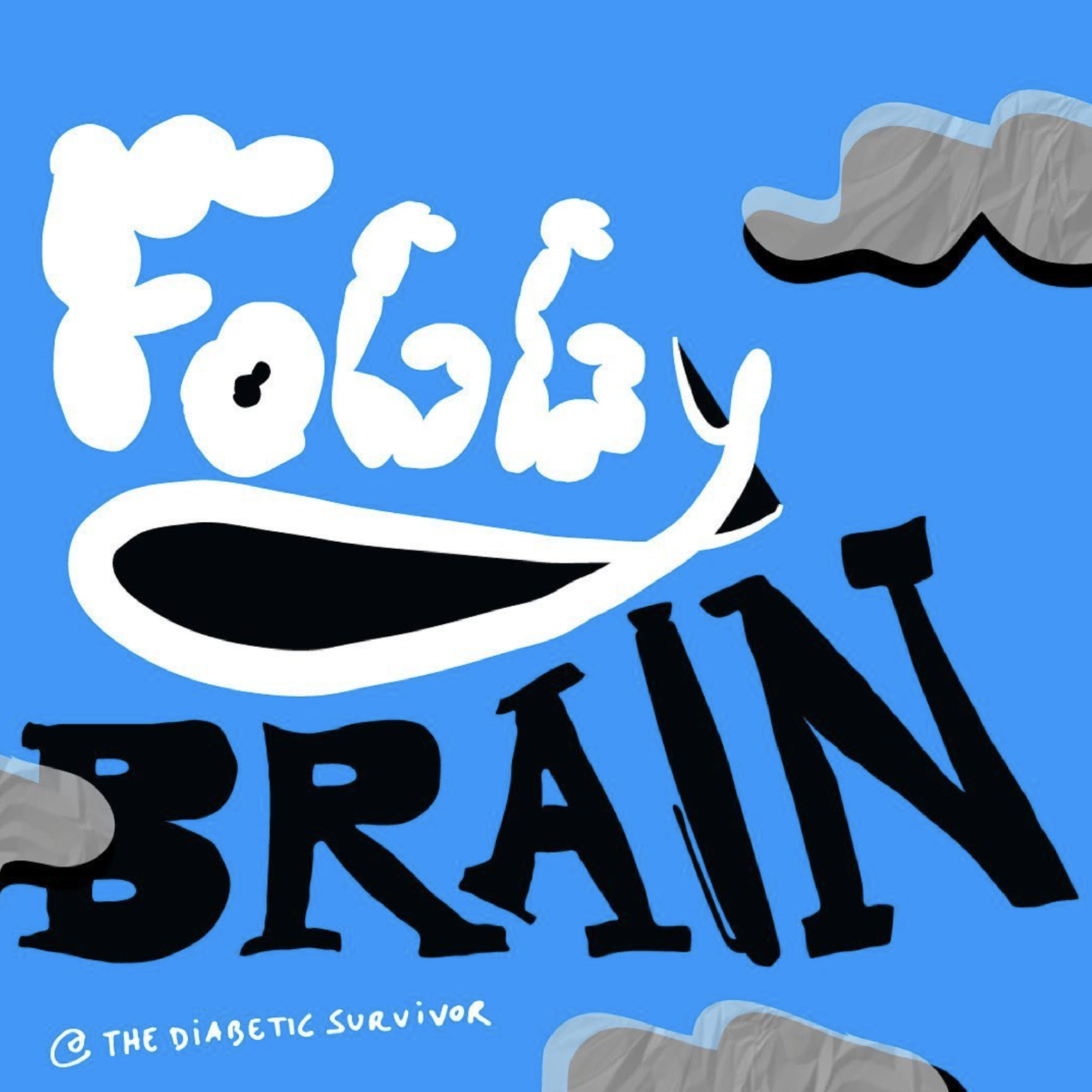Raising diabetes awareness through art and design
I believe that image-making has the power to create social change and drive transformative conversations within our diabetes community. It can shift the entire narrative and help us move away, for example, from fear-based imagery or the pervasive, and often horrific, medical aesthetics.
For now, I’ll leave out the complex discussions around art vs design, the role of functionality or purpose in the creative process, semiotics, and all that stuff! Instead, I’ll focus on how any sort of image can bring attention to a cause, specifically diabetes. Bear in mind that words can also be read as images.
Addressing mental health and diabetes through art. Source: The Diabetic Survivor
Many years ago, an article by disability rights activist and writer Victor Berel Finkelstein shifted my perspective completely. Victor stated that people in wheelchairs feel out of place; not necessarily because of being in a wheelchair but because everything around them was designed FOR people and BY people who were standing on both feet. This includes cities, parks, cars, tables, and more. I would expand this list to include: newspapers, the language used in them, their layout, and the placing of images.
Now, imagine a city where you have a hypo treatment kiosk on every corner. A workplace where co-workers do not judge you for injecting in public — everybody does that in this imaginary city! I know it’s dreamy, but sometimes we have to dream to make things happen and to challenge misconceptions. This is the mindset I like to be in every time I work on projects at @thediabeticsurvivor.
The numbers on your diabetes devices do not define your worth. Source: The Diabetic Survivor
What art means to me
Art has an incredible ability to captivate us, stirring a mix of awe and curiosity within us. Some pieces effortlessly tap into our inner creativity and appreciation for beauty, while others provoke deep contemplation on social issues. Regardless of the intensity, remarkable artworks compel us to pause, feel something directly in our guts, and think (well, yes, but only if we are in range; if not, it might be for another day).
Brain fog: many people living with diabetes report feelings of brain fog. Source: The Diabetic Survivor
I find it fascinating how something visual, something that unfolds in seconds in front of us, can communicate so much. That applies not only to, let’s say, a painting, something high culture. To a certain extent, it also applies to good design and even to good communication when it comes to discussing our life with diabetes.
This is precisely why anything designed to advocate for diabetes (or any other cause) can be so impactful. Many diabetes advocates using social media channels do it daily. They use their creations to convey personal expressions, make statements, mobilise support for a cause, or a mix of them all.
How can art raise diabetes awareness?
1) Art opens up the conversation
Art can open up valuable conversations in many aspects, not only within the diabetes community but also with a wider audience. It can raise awareness. You know how it goes: let’s make visible the famous ‘hidden’ nature of diabetes and start a conversation.
2) Art educates
Communications with bold numbers or statements can help to educate us and everyone around us. A good example of this is the placard ‘180 decisions every day,’ which shows how many extra decisions we, as people living with diabetes, make per day.
People living with diabetes have to make an additional 180 decisions every day compared to a person without diabetes. Source: The Diabetic Survivor
3) Art helps to change the narrative
Any piece of communication, whether visual or written, has the potential to change the narrative. Let’s think about the #LanguageMatters movement, for example. This brings attention to the use of language itself, and how we refer to or even conceptualise important words such as patient, chronic, disease, etc.
Art can also address diabetes stigma, question misconceptions, and open up new perspectives or ways of thinking about living with diabetes — for us and for everybody around us. Just think about misrepresentation in visual culture, such as in films. Imagine how much we can do if we get the narrative right!
Art can be used to challenge diabetes stigma. People living with diabetes are often blamed for developing their illness. Source: The Diabetic Survivor
4) Art creates community
One of the most important points to me: art creates community, which creates empathy, which then creates real change. As mentioned before, art doesn’t only capture the experience of people living with diabetes but also with the wider community: carers, health-care professionals, friends, family, and more.
Challenging diabetes stigma through art: from social media to scientific conferences
As a designer living with type 1 diabetes, I enjoy challenging the old misconception in which ‘disabled’ people have traditionally been viewed as passive and unable to cope with the world around us – sorry, I’m still a rebel. Following that train of thought, I like to think part of taking action myself is working in the diabetes industry and also being actively involved in the diabetes community.
Recently, as a recipient of the #dedoc° voices scholarship, I was proudly part of the cohort assisting the European Association for the Study of Diabetes (EASD) in Hamburg. I encourage anybody to apply for it.
While there, I was lucky enough to present at the #dedoc° symposium addressing stigma by connecting art and diabetes, which, as you can imagine, has many connections with this article.
It was a great experience attending EASD 2023. If you have the opportunity to attend any diabetes professional conference, embrace the opportunity!
Found this article insightful? Please spread the word and share it with your network.



